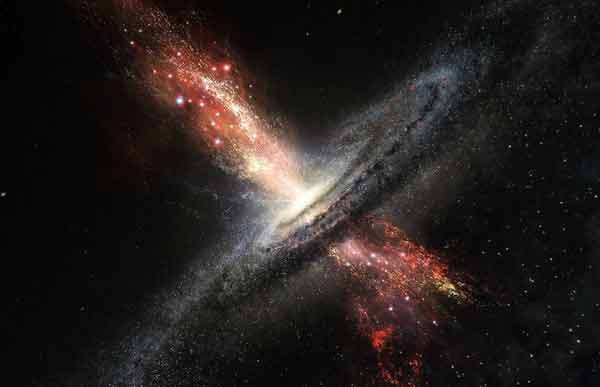

This photo is taken from Bitcell
Colorado,USA (BBN)- A team led by the University of Colorado Boulder caught a supermassive black hole in a distant galaxy snacking on gas and then "burping" – not once but twice.
The study's leader and assistant professor at CU Boulder's Department of Astrophysical and Planetary Sciences, Julie Comerford, said the black hole under study appears to have essentially blasted out jets of bright light from the gas it inhaled – twice over the course of about 100,000 years, reported the Bitcell.
While astronomers have predicted such objects can flicker on and off as a result of gas-feeding events, this study is the strongest evidence yet that supermassive black holes do indeed switch on and off over timescales that are short compared to the age of the universe, which is 13.8 billion years old.
Supermassive black holes – which are millions of times heavier than our sun and are believed to be at the heart of virtually every galaxy – are like regular black holes in basic ways: Regions with such strong gravitational effects that nothing, not even light, can escape. But when the areas around supermassive black holes emit light stemming from feeding episodes, they are known as quasars, Comerford said.
"We are seeing this object feast, burp and nap, and then feast, burp and nap once again, which theory had predicted. Fortunately, we happened to observe this galaxy in a moment where we could clearly see evidence for both events."
A paper on the subject was published in a recent issue of the Astrophysical Journal. Comerford presented the team's findings in a Jan. 11 press briefing at the 231st meeting of the American Astronomical Society, held Jan. 8-12 in Washington D.C.
BBN/TTA/AD